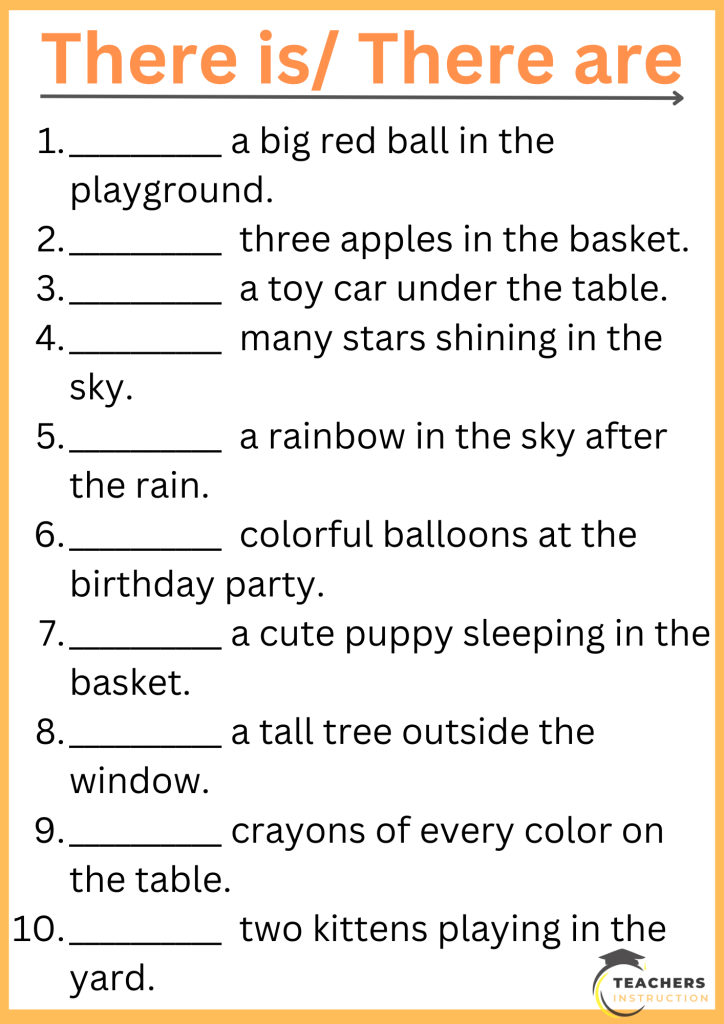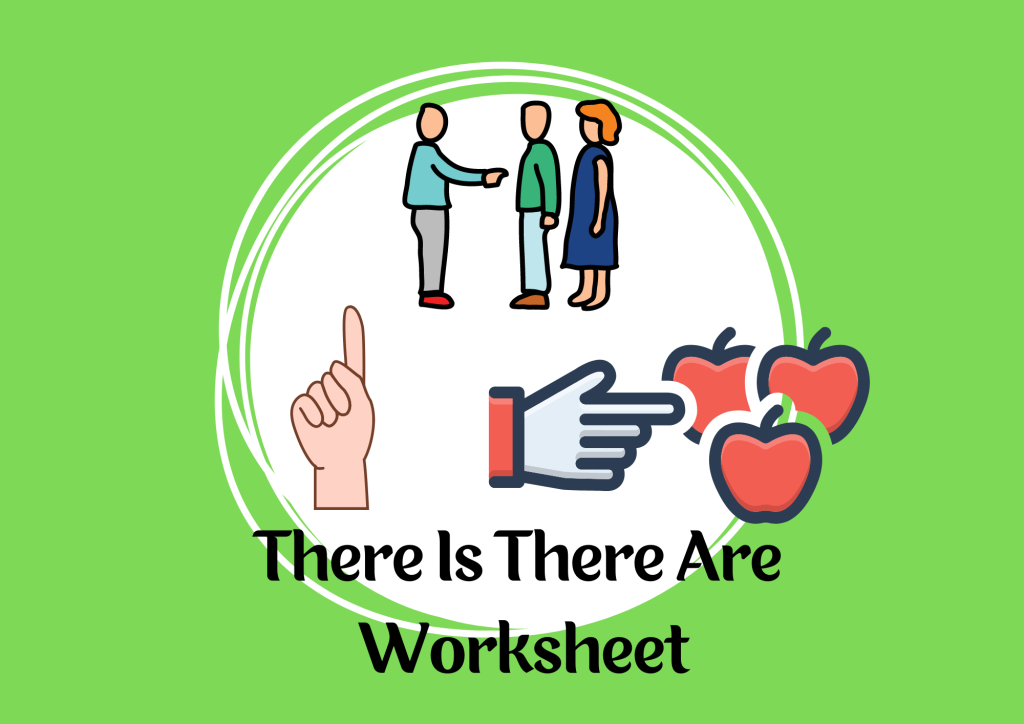Helping children understand the difference between “there is” and “there are” sets a strong foundation for language development. This simple yet crucial grammar rule plays a big role in sentence formation, and our there is there are worksheet offers interactive activities to reinforce this concept. These exercises make learning enjoyable, ensuring kids understand when to use each phrase properly.
There Is There Are Worksheet With Answer

- __________ a big red ball in the playground.
- __________ three apples in the basket.
- __________ a toy car under the table.
- __________ many stars shining in the sky.
- __________ a rainbow in the sky after the rain.
- __________ colorful balloons at the birthday party.
- __________ a cute puppy sleeping in the basket.
- __________ a tall tree outside the window.
- __________ crayons of every color on the table.
- __________ two kittens playing in the yard.
Answer:
- There is a big red ball in the playground.
- There are three apples in the basket.
- There is a toy car under the table.
- There are many stars shining in the sky.
- There is a rainbow in the sky after the rain.
- There are colorful balloons at the birthday party.
- There is a cute puppy sleeping in the basket.
- There is a tall tree outside the window.
- There are crayons of every color on the table.
- There are two kittens playing in the yard.
Download Printables From Here:
Right Way to Use There Is and There Are
“There is” and “there are” are used to indicate the existence of something or someone in a particular place or situation. Here’s a breakdown of their uses:
1. Singular vs. Plural
- “There is” is used with singular nouns or uncountable nouns.
- Example: There is a cat on the roof.
- Example: There is some water in the glass.
- “There are” is used with plural nouns.
- Example: There are five books on the table.
- Example: There are many people at the park.
2. Affirmative Statements
- “There is” and “there are” are often used to simply state that something exists.
- Example: There is a meeting today.
- Example: There are cookies in the jar.
3. Negative Statements
- To indicate that something does not exist, add “not” after “there is” or “there are.”
- Example: There is not any milk in the fridge.
- Example: There are not enough chairs for everyone.
4. Questions
- For questions, invert the order of “there is” or “there are.”
- Example: Is there a pen on the desk?
- Example: Are there any apples in the basket?
5. With Quantifiers
- Both phrases can be used with quantifiers like some, any, a lot of, few, many, etc.
- Example: There is some sugar left in the jar.
- Example: There are many reasons to visit that place.
6. Using Descriptions
- These phrases are often used to describe what’s present in a particular location.
- Example: There is a beautiful garden behind the house.
- Example: There are mountains in the distance.
This basic structure can be applied to various contexts, depending on whether the subject is singular or plural, making “there is” and “there are” essential for expressing existence and location in English.
Conclusion
With consistent use of the there is there are worksheet, children will gain confidence in using these important grammatical structures. The fun and engaging activities ensure that young learners can easily differentiate between singular and plural forms, making communication smoother and more accurate.

